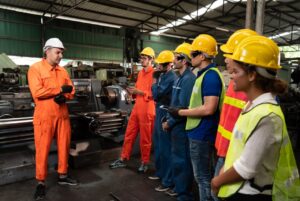Rethinking management: 3 questions for Pierre Bocquet, associate researcher at the FIT2 Chair and co-author of “Responsibilizing Organization”


A responsible organization is not the same as a liberated company. Responsibility is based on the idea that a large number of actions and decisions reserved for the hierarchy and support functions can be left to the initiative of operational staff. It is a progressive and continuous dynamic of broadening the responsibility of employees, by developing their power to act. For managers, it is no longer a question of organizing or deciding everything, but of helping the team to do as much as possible on its own without endangering the company. For team members, it is a question of integrating the idea that the power to act goes hand in hand with increased skills and the obligation to be accountable.
Many companies are interested in this organizational model, but they are stumped as to how to go about it. The empowering model aims to change corporate culture and behavior. These are complex areas. If the management is not aligned and determined, if it is not long-term and if it does not propose a clear and systemic framework for the transformation project, then it will be very difficult for the empowering model to take root.

To help companies build this new framework, we have created an empowerment compass. It includes 5 structuring dimensions that must progress together: responsibility, subsidiarity, solidarity, collegiality and activity.
In concrete terms, empowerment entails a shift in decision-making towards those who usually execute, this is subsidiarity. Solidarity between members and collegial decision-making mean that team members do not feel isolated in the face of their new responsibilities. Finally, one of the sensitive points is the redefinition of activities, in particular that of managers, who will have to learn to regulate work rather than to manage it.

At a time when retirement is receding and careers are lengthening, have companies really realized the value of their “senior capital”? The pension ref...